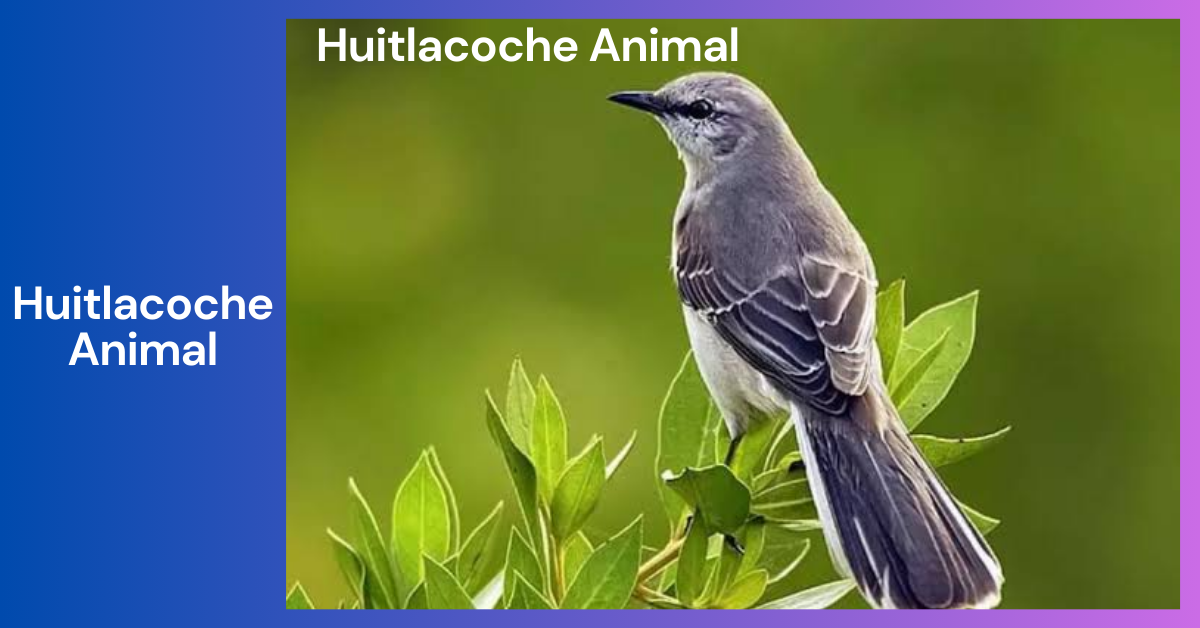
When exploring the world of unique and lesser-known culinary ingredients, few are as intriguing as huitlacoche.
Often referred to as “corn smut,” huitlacoche is a fungus that infects corn, transforming the kernels into swollen, blackened structures.
Huitlacoche Animal refers to a fungus known as Huitlacoche Pajaro or corn smut. This fungus infects corn kernels, causing them to swell into large, bulbous, and blackened structures. Although it may look unusual, huitlacoche is prized in Mexican cuisine for its unique flavor and nutritional benefits.
Although it might sound unappealing at first, huitlacoche has a long history of use in traditional Mexican cuisine and is gaining recognition for its distinctive flavor and potential health benefits.
This article will delve deeply into huitlacoche, covering its biological aspects, historical significance, culinary uses, and health benefits.
By the end, you will have a comprehensive understanding of this fascinating fungus, and why it might be worth incorporating into your diet.
What is Huitlacoche Animal?
The Biology of Huitlacoche Animal
Huitlacoche Animal, scientifically known as Ustilago maydis, is a type of parasitic fungus that affects corn plants. When this fungus infects corn kernels, it causes them to swell and turn black.
This transformation results in the development of large, bulbous structures that are often compared to mushrooms or truffles in appearance.
The infected kernels have a soft, spongy texture and a dark, almost metallic sheen. These characteristics are a result of the fungal infection disrupting the normal development of the corn kernel.
The Lifecycle of Huitlacoche Animal
The lifecycle of huitlacoche involves several stages:
- Infection: The fungus starts by infecting the corn plant through its silk. Once inside, it begins to colonize the kernels.
- Symptom Development: As the infection progresses, the corn kernels start to swell and darken. The kernels become filled with fungal spores and other fungal tissues.
- Maturation: Over time, the fungal mass matures and eventually releases spores that can infect other corn plants, continuing the lifecycle.
Historical Significance
Huitlacoche Animal in Pre-Hispanic Mexico
Huitlacoche Animal has been a part of Mexican cuisine for centuries. Indigenous peoples of Mexico, including the Aztecs and Maya, valued huitlacoche for its unique flavor and nutritional properties.
It was used in various traditional dishes and was considered a delicacy.
Modern Rediscovery
While huitlacoche fell out of favor in many parts of Mexico due to the rise of modern agriculture, it has experienced a resurgence in recent years.
Chefs and food enthusiasts around the world are rediscovering its unique flavor profile and potential uses in contemporary cuisine.
Culinary Uses of Huitlacoche Animal
Flavor Profile
Huitlacoche Animal has a rich, earthy flavor with a hint of sweetness and a slightly smoky taste. Its texture is often compared to that of mushrooms, making it a versatile ingredient in a variety of dishes.
Popular Dishes Featuring Huitlacoche
- Tacos: One of the most common ways to enjoy huitlacoche is in tacos. The fungus is sautéed with onions, garlic, and spices, then served in tortillas.
- Tamales: Huitlacoche is often used as a filling for tamales, where its rich flavor complements the corn-based dough.
- Soups and Stews: The fungus can also be used to add depth and complexity to soups and stews.
- Salsas and Sauces: Huitlacoche can be incorporated into salsas and sauces, adding an umami-rich component to these condiments.
How to Prepare Huitlacoche Animal
Fresh huitlacoche can be found at specialty markets or farmers’ markets. It should be cooked soon after purchase to preserve its flavor and texture.
The preparation usually involves sautéing the huitlacoche with onions, garlic, and other seasonings. It can then be used in a variety of dishes.
Where to Buy Huitlacoche Animal
In the United States, huitlacoche can be found in Latin American grocery stores, specialty food markets, and online. It is available in both fresh and canned forms.
Health Benefits of Huitlacoche Animal
Nutritional Profile
Huitlacoche is not only flavorful but also nutritious. It contains a range of vitamins and minerals, including:
- Protein: Huitlacoche is a good source of protein, which is essential for muscle growth and repair.
- Fiber: It contains dietary fiber, which supports digestive health.
- Vitamins: It provides vitamins such as B vitamins, which are important for energy metabolism.
- Minerals: Huitlacoche is rich in minerals like potassium, which helps regulate blood pressure.
Potential Health Benefits
- Immune Support: The nutrients in huitlacoche can help strengthen the immune system, making it easier to fend off illnesses.
- Digestive Health: The fiber content in huitlacoche supports healthy digestion and can help prevent constipation.
- Antioxidant Properties: Some studies suggest that huitlacoche contains antioxidants that may help protect the body from oxidative stress and inflammation.
Challenges and Considerations
Availability and Cost
One of the main challenges with huitlacoche is its availability. Fresh huitlacoche can be hard to find outside of specialty markets, and it can be expensive.
Canned huitlacoche is more widely available but may not have the same flavor profile as fresh.
Culinary Considerations
Huitlacoche has a strong and distinctive flavor that may not appeal to everyone.
It’s important to balance its unique taste with other ingredients when incorporating it into recipes.
Conclusion
Huitlacoche, often referred to as “corn smut,” is a unique fungus that transforms corn kernels into a dark, bulbous mass.
While its appearance might initially be off-putting, huitlacoche has a rich, earthy flavor that has been valued in Mexican cuisine for centuries.
Its resurgence in popularity reflects a growing appreciation for diverse and traditional ingredients in modern cooking.
Whether you are a seasoned chef or an adventurous eater, exploring huitlacoche offers a chance to experience a distinctive ingredient with historical significance and potential health benefits.
As you consider incorporating this fascinating fungus into your culinary repertoire, remember that huitlacoche represents not just a unique flavor, but also a connection to the rich tapestry of global food traditions.
FAQs about Huitlacoche Animal
What is huitlacoche commonly known as in English?
Huitlacoche is commonly known as “corn smut” in English. It is a fungal infection of corn kernels.
Can huitlacoche be consumed raw?
No, huitlacoche should not be eaten raw. It is typically cooked to enhance its flavor and texture.
How does huitlacoche affect the corn plant?
Huitlacoche infects corn kernels, causing them to swell, darken, and develop a spongy texture. This disrupts normal corn development.
Is huitlacoche available in grocery stores?
Huitlacoche can be found in Latin American grocery stores and specialty markets. It is also available canned online.
What types of dishes commonly use huitlacoche?
Huitlacoche is often used in tacos, tamales, soups, and salsas. Its rich flavor complements many traditional Mexican dishes.
Are there any health benefits to eating huitlacoche?
Yes, huitlacoche is rich in protein, fiber, and essential vitamins and minerals. It may support digestive health and boost the immune system.
How should huitlacoche be stored?
Fresh huitlacoche should be used promptly, but canned huitlacoche can be stored in a cool, dry place. Once opened, canned huitlacoche should be refrigerated.





